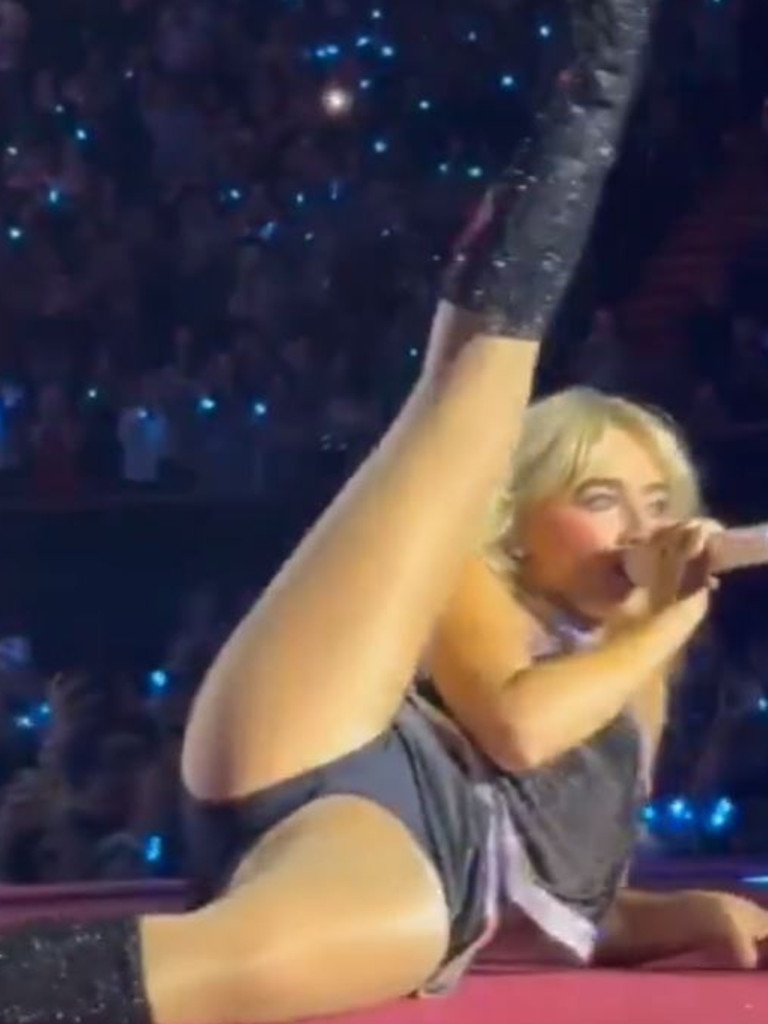Sabrina Carpenter Deepfakes & Nudes: Uncensored Content Awaits!
Is the allure of the unattainable a powerful draw? The proliferation of fabricated content, fueled by advances in artificial intelligence, has created a landscape where the boundaries of reality are increasingly blurred, and the desires of audiences are catered to in unprecedented ways. This exploration delves into the intricate ecosystem of online content, examining the implications of this evolving digital frontier.
The digital world has become a multifaceted arena, reflecting and shaping our collective fascinations, curiosities, and sometimes, our most complex desires. The rise of sophisticated technology, particularly in the realm of artificial intelligence (AI), has catalyzed a significant shift in how we consume media and the types of content available. This transformation is particularly evident in the entertainment industry and the adult content sectors, where innovation frequently intersects with the boundaries of what is considered acceptable or real.
| Category | Details |
|---|---|
| Full Name | Sabrina Annlynn Carpenter |
| Date of Birth | May 11, 1999 |
| Place of Birth | Lehigh Valley, Pennsylvania, U.S. |
| Nationality | American |
| Occupation | Singer, Songwriter, Actress |
| Years Active | 2010present |
| Known For | Her role as Maya Hart in "Girl Meets World", and her music career with hits like "Thumbs", "Emails I Can't Send", and "Feather". |
| Associated Acts | Various collaborations and tours with other artists. |
| Official Website | sabrinacarpenter.com |
The concept of "deepfakes" represents one of the most intriguing and, at times, concerning developments in this area. Deepfakes utilize AI and machine learning algorithms to create highly realistic videos and images that depict individuals in situations they never experienced. This technology has advanced to a point where the creations are often difficult to distinguish from authentic content, sparking debates about authenticity, consent, and the potential for misuse.
Numerous platforms and websites have emerged to cater to the demand for such content. These platforms, which range from established adult entertainment sites like Pornhub and Xvideos to specialized websites and forums, offer extensive libraries of videos and images. Often, these platforms host content generated through deepfake technology, featuring celebrities and public figures in simulated scenarios. The availability of this content underscores the complex relationship between technology, desire, and the commodification of images.
The ethical and legal implications of deepfakes are significant. The creation and distribution of non-consensual intimate content raise critical questions about privacy, defamation, and the potential for harm. Deepfake technology can be used to create false narratives, spread misinformation, and damage reputations. This reality necessitates a careful consideration of the legal frameworks and ethical guidelines needed to regulate this rapidly evolving digital space.
In this context, the term "NSFW" (Not Safe For Work), is frequently used as internet slang, signaling the potential for explicit or sexually suggestive content. This term serves as a warning label, prompting users to exercise discretion when accessing this material. Similarly, the presence of "AI" or "deepfake" tags indicates that the content has been generated using artificial intelligence, highlighting the technological underpinnings of its creation.
- King Clarence The Funniest Black Labrador On The Internet
- Flip Wilsons Legacy From Foster Homes To Tv Icon
The content often described includes a wide range of explicit acts and scenarios. The language used, such as "stripping naked," "giving blowjobs," "handjobs," and "taking anal," emphasizes the graphic nature of the material. The prevalence of such content indicates the extent of interest in this area and the willingness of creators and distributors to cater to these desires.
The creation of this content relies heavily on available technology, particularly software like DeepFaceLab (DFL). This software uses AI and machine learning algorithms to swap faces and manipulate images, allowing for the creation of convincing deepfakes. The sophistication of this technology has reached a point where the resulting videos can be surprisingly realistic, adding to the allure and potential for deception.
The accessibility of such content is also a key factor. Platforms like Erome and various other sites function as distribution hubs, enabling individuals to share their creations with a broad audience. These platforms provide the infrastructure necessary to disseminate content, facilitating its consumption and contributing to its widespread availability.
The nature of this content also highlights the dynamics of online communities. Forums and other online spaces provide environments for users to discuss, share, and engage with this material. This interaction creates a sense of community and fosters a shared interest in the subject matter.
Beyond the technical aspects and distribution networks, the motivations behind the creation and consumption of this content are varied. For some, the appeal lies in the ability to experience simulated scenarios. Others may be drawn to the element of fantasy or the exploration of forbidden desires. It is crucial to acknowledge the multifaceted nature of these motivations in order to fully understand the complexities of this digital phenomenon.
There are also economic factors at play. The demand for this type of content drives the creation of a market, where producers and distributors monetize their offerings. This economic dimension fuels the continued development of deepfake technology and the expansion of the content available.
The rise of deepfake technology has generated an environment where the lines between reality and fabrication are increasingly blurred. This has sparked important discussions about ethics, consent, and the boundaries of digital creativity. While technology continues to evolve, these conversations are essential in shaping a responsible and ethical approach to the digital landscape.
The legal and ethical implications of this content continue to be a subject of debate and scrutiny. Laws and regulations are often struggling to keep pace with the quick development of technology, and this gap creates complex challenges in areas such as copyright and privacy.
The subject matter frequently involves well-known figures in the entertainment industry, which generates further complexities. The unauthorized use of celebrity likenesses raises concerns about image rights and the potential damage to reputation. These celebrities might become the target of these creations and their faces are used without their permission, resulting in legal and moral implications.
The rise of artificial intelligence and deepfake technology has undoubtedly revolutionized the way we consume media. The ability to create realistic but entirely fabricated content has the potential to challenge perceptions of reality and raise serious questions about authenticity, consent, and the ethical usage of technology. It's imperative to approach this new frontier with awareness, critical thinking, and a commitment to safeguarding individual rights and values.
- Tasha Cobbs Leonard Net Worth 2024 Income Earnings
- Sherry Stringfield Net Worth How Rich Is The Er Star In 2024

A photoshopped image of Sabrina Carpenter and Olivia Rodrigo going

Sabrina Carpenter slammed for X rated move at concert news .au

Sabrina Carpenter Fake Nude The Truth Behind The Controversy